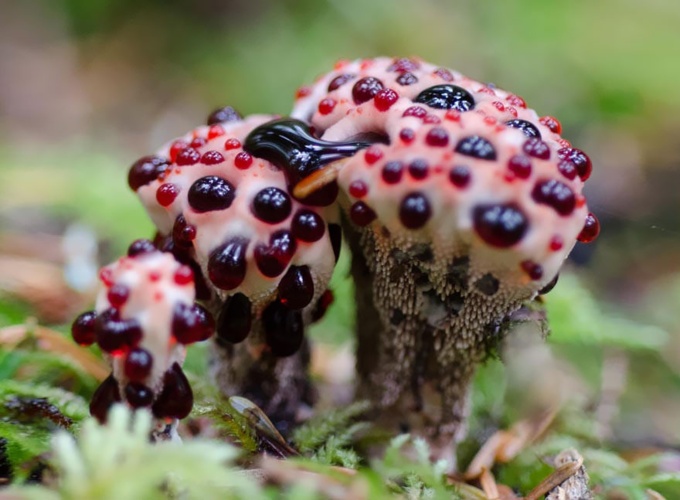|
|
Fungi Mushroom Microorganisms
|
The English word fungus is directly adopted from the Latin fungus (mushroom), used in the writings of Horace and Pliny. This in turn is derived from the Greek word sphongos/σφογγος ("sponge"), which refers to the macroscopic structures and morphology of mushrooms and molds; the root is also used in other languages, such as the German Schwamm ("sponge"), Schimmel ("mold"), and the French champignon and the Spanish champiñon (which both mean "mushroom"). The use of the word mycology, which is derived from the Greek mykes/μύκης (mushroom) and logos/λόγος (discourse), to denote the scientific study of fungi is thought to have originated in 1836 with English naturalist Miles Joseph Berkeley's publication The English Flora of Sir James Edward Smith, Vol. 5.
Fungi have a worldwide distribution, and grow in a wide range of habitats, including extreme environments such as deserts or areas with high salt concentrations or ionizing radiation, as well as in deep sea sediments. Some can survive the intense UV and cosmic radiation encountered during space travel. Most grow in terrestrial environments, though several species live partly or solely in aquatic habitats, such as the chytrid fungus Batrachochytrium dendrobatidis, a parasite that has been responsible for a worldwide decline in amphibian populations. This organism spends part of its life cycle as a motile zoospore, enabling it to propel itself through water and enter its amphibian host. Other examples of aquatic fungi include those living in hydrothermal areas of the ocean.
Around 100,000 species of fungi have been formally described by taxonomists, but the global biodiversity of the fungus kingdom is not fully understood. On the basis of observations of the ratio of the number of fungal species to the number of plant species in selected environments, the fungal kingdom has been estimated to contain about 1.5 million species. In mycology, species have historically been distinguished by a variety of methods and concepts. Classification based on morphological characteristics, such as the size and shape of spores or fruiting structures, has traditionally dominated fungal taxonomy. Species may also be distinguished by their biochemical and physiological characteristics, such as their ability to metabolize certain biochemicals, or their reaction to chemical tests. The biological species concept discriminates species based on their ability to mate. The application of molecular tools, such as DNA sequencing and phylogenetic analysis, to study diversity has greatly enhanced the resolution and added robustness to estimates of genetic diversity within various taxonomic groups.
|
|









